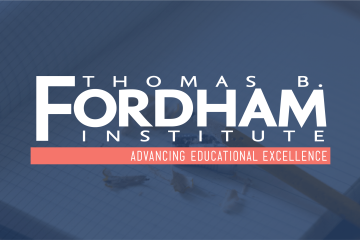A few months ago I shared some reflections from Race to the Top and implications for this moment. As I am now supporting a number of state and district planning processes, the macro lessons hold true but I am struck by the degree of difficulty of the present task:
- The timing is challenging. While a few states have started releasing their guidance, most are still working through plans. District plans will be due between late July and September—out of step with budget processes, after the calendar for the year is set and curriculum plans are in place, and, critically, outside the window of education’s typical hiring season.
- The amount of money is so unfamiliar it is hard to digest. Teams keep losing track of place values.
- The funding is a short-term influx that will go away. Teams are clearly aware of this limit but it is also challenging to find high-impact uses of this much funding that they will not want to sustain.
- The level of scrutiny on both plans and process is high. There is constant talk about the stakes, the rarity of this opportunity, and the collaborative effort needed. Leaders are hearing this and taking it very seriously.
- The 2020–21 school year was not simple. Neither was 2019–20. Leadership teams are rarely coming to this planning gauntlet with fresh energy or a lot of free space on their schedule.
These constraints make it feel like asking an architect to collaboratively design a community center on a mountain top that will be judged by a panel with competing priorities by next Thursday.
As I engage with teams working through plans, I’ve seen three big challenges and a few approaches for each that support progress.
Challenge 1: Wanting to do it all. Every team I work with starts with a broad set of ambitions and feels the pressure to solve every problem all at once in the next three years. More often than not, this leads to difficulty making decisions, team tension, and anxious thinking.
Approaches that may help:
- Acknowledge the limits upfront. The sooner leadership teams, communities, and those of us privileged to work with schools acknowledge that we are not going to solve all of the problems in American education in the next few years, the sooner we can work together to identify a few areas where we can make significant progress.
- Start with, and spend significant time on, clarifying the vision and goals. Too often I see teams start with the question “How do we want to spend the money?” and those conversations always lead to ranging laundry lists of potential ideas. Instead, when teams start by getting clear and precise about what they want to be true in three years, the strategies become more obvious and exciting.
- Force hard choices. Teams driving toward a few clear outcomes also have long lists of outcomes they are clearly not driving towards. Establishing that list is a painful but important part of planning. Exercises like “you have 100 pennies to allocate across these options,” or “force rank these options,” or “if you could only pick three” can help teams find their focus.
Challenge 2: Strategies not feeling bold or impactful. I have talked to a number of leaders who have said some version of “I feel like we are struggling to find big new ideas beyond tutoring and summer school.” I have also talked to leaders that have plenty of ideas and are already worried about initiative indigestion. What those leaders have in common is that they are all trying to make sure what they do has real impact.
Approaches that may help:
- Start with vision, not the budget. (I am becoming a broken record.)
- Don’t skip the root cause analysis. Instead of jumping from “What do we want to accomplish?” to “How do we get there?”, teams that pause to ask “Why are we not there yet?” often unlock strategies that feel more impactful.
- Beware novelty obsession. We do need new approaches to strengthen education but we also know a great deal about what works. Plans do not need to have exclusively new approaches. Building on strengths is often a quicker and more effective path than launching new ideas.
- Start small. States will vary in their guidance, but all the money does not need to be spent in the first year. Year 1 can be a time to try a few things; teams can plan to spend more in years 2 and 3 on the things that gain the most traction and energy.
Challenge 3: Good intentions for a process hampered by the reality of time. Every leader I talk to wants the planning process to be a unifying opportunity for their team and key stakeholders. While many have the capacity to design and lead these kinds of processes quite effectively, the reality of multiple responsibilities, summer schedules, and the detailed communication that goes into setting up and managing a strong process is hard to imagine, particularly on a short timeline.
Approaches that may help:
- Have a facilitator whose job is to manage the process. It is incredibly hard to both facilitate and input at the same time. Whether it is asking someone with the facilitation skills internally or finding an external partner, having a person or group accountable to the success of the planning process always helps.
- Put the continuous improvement checkpoints on the calendar now. Even if the upfront planning is truncated and less collaborative than desired, there is no reason the continuous improvement journey can’t involve broad stakeholder input. Forming an implementation committee that monitors and evolves the implementation over time is a vital ingredient to successful curriculum implementation, and the same will hold true for any big plan.
I suspect that when we look back in three years at the stories of greatest impact, the teams with the strongest results will be those that 1) had the clearest upfront focus on the outcomes they want to achieve, 2) navigated the inevitable evolution of their plans with clear focus on those outcomes, and 3) operated with commitment to continuous improvement across the journey. And I suspect we will find that the strongest plans are the ones that set up teams to get those results.
Emily Freitag is the former Assistant Commissioner for Curriculum and Instruction for Tennessee and the co-founder and CEO of Instruction Partners. She led Teach For America in Connecticut and Washington, D.C., and is a former seventh grade teacher. If you’d like to join Emily’s mailing list and receive communications from her a few times a month, you can subscribe here.




